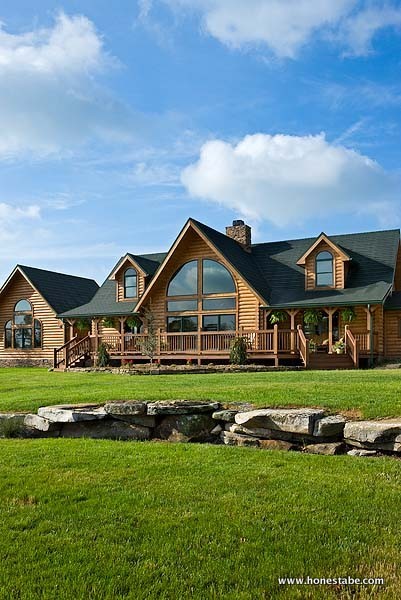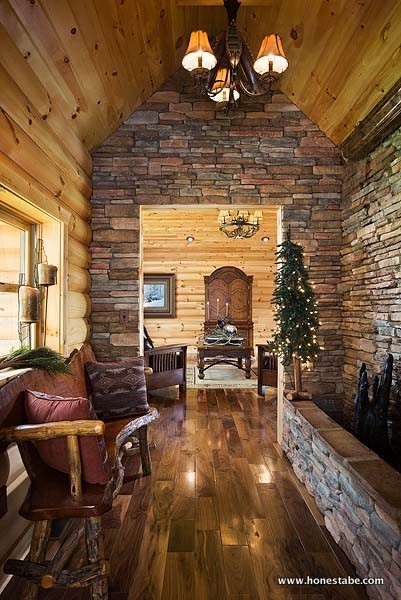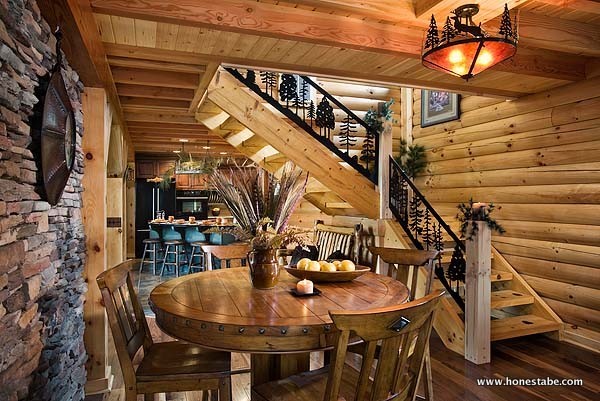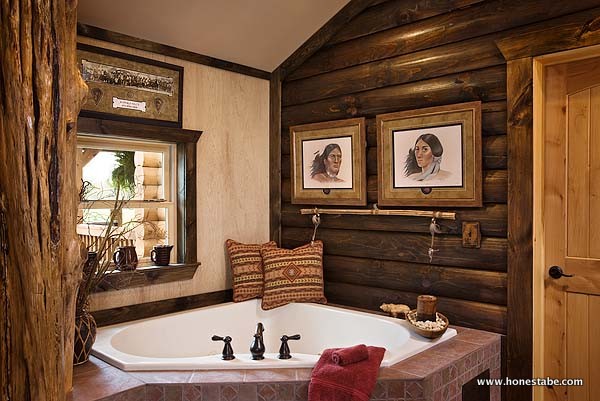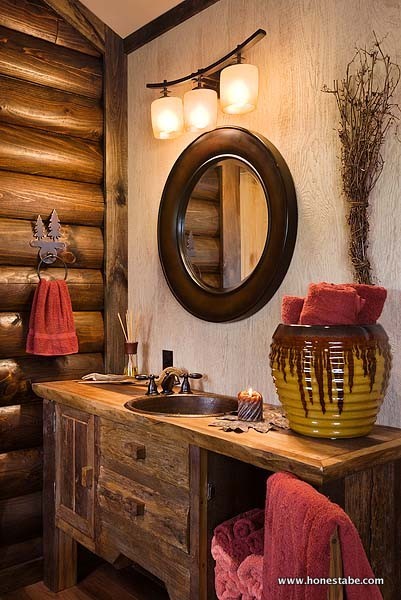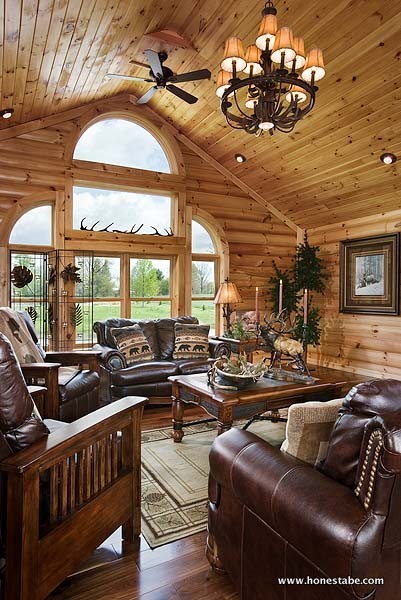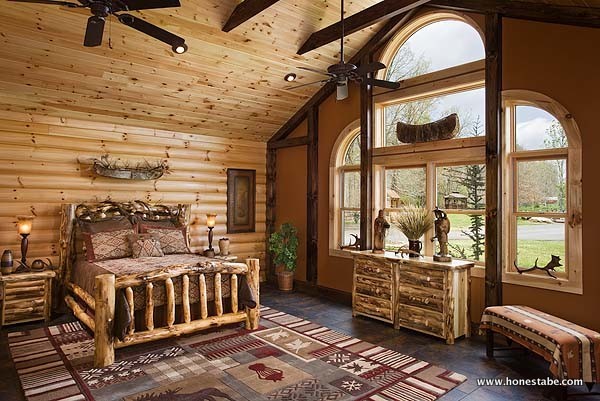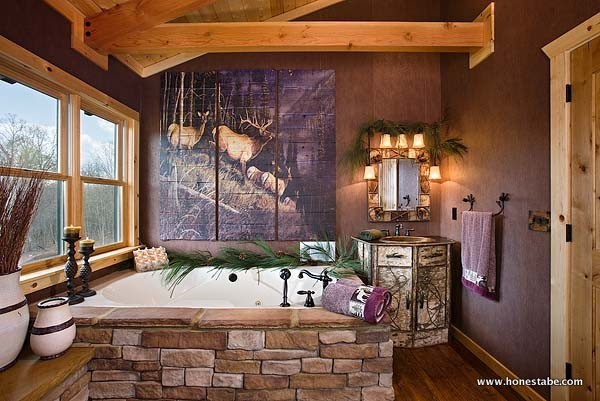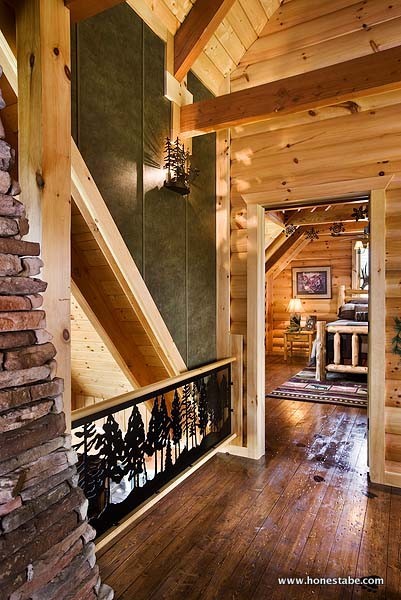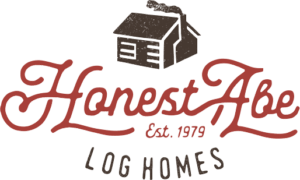A Natural Fit
A family effort creates the perfect home.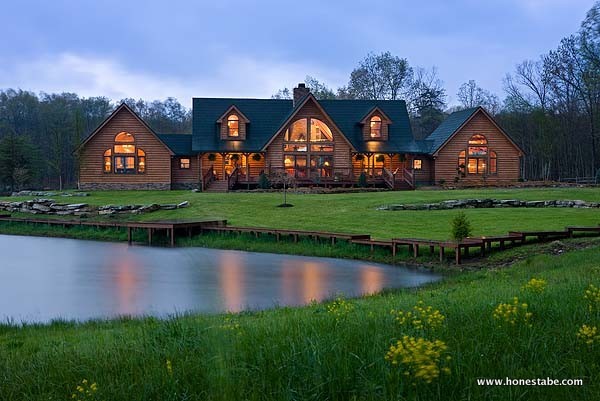
by Ronda Mollica, Country’s Best Log Homes Annual Buyer’s Guide, 2009
Grady Wilson has been a taxidermist for more than 30 years. He’s created wildlife scenes that have appeared in museums and retail stores nationwide in addition to working on African trophy mounts for individuals.
Grady and his wife Janet wanted a home that would reflect their love of the outdoors, and log home seemed like a natural fit. When land became available near their home in Crossville, Tenn., their plans moved from a pencil drawing on a napkin to actual blueprints.
The 20-acre property was actually just across the street from their home and the Wilsons were surprised it went up for sale.
“The land had been handed down from one generation to the next,” says Janet. “We never thought the family would want to let it go.”
The Wilsons first selected a homesite on the property, then dug a few small lakes that would attract wildlife.
Realizing they’d want the home raise on the site for a better view of the property and its fl ora and fauna, they used dirt from the dig to built up the foundation area.
“We actually needed 60 more loads of fill to build up a sloping elevation for the home,” Jeanette says. “We also had to bring in several loads of gravel to create the driveway and a gravel pad that served as a holding place for the log package when it was delivered.”
The package was from Honest Abe Log Homes.
“We knew they were a great company and thought the close proximity would helps us out if we needed any help or extra wood while we were building,” says Grady.
With the ponds in the front and forests to the back, the Wilsons wanted the home to have as much glass to the front as possible. The Bellewood plan offered that option with just a few modifications. They added a garage to the side of the home and connected it to the extended family room with a breezeway that matched one on the other side of the home.
“As we were building this garage and had the cement laid and doorways cut into the foundation, we realized that placing a garage here with the great view of the ponds was ridiculous,” says Grady. “We decided to turn that space into our master bedroom and part of the breezeway would become our bathroom. What was supposed to be our bedroom on the original plan became an office and the master bath area became a generous laundry room.”
Son Nathan, who worked in the family taxidermy business, did all the interior detail work, including the flooring, trim and tile work.
“We knew he was a skilled craftsman,” Grady says. “We just didn’t know how talented he was and wondered if he might change careers.”
Jeanette also helped with the design.
“We had a problem with too many posts in the home and opted to put in a metal beam and just two posts,” Grady says. “Jeanette had the idea to cover the beams with wood planks to make them look like timbers and then create archways with corner brace boards for a southwest look. This cover up made a big difference in the room from what it was.”
Daughter Melissa helped turn the home into something special.
“I was ready to use antiques as a base for my decor, but when we saw how our daughter decorated her home, we decided to ask for her help,” Jeanette says. “She asked us to select our favorite framed painting from a selection of three, and we choose a print of an elk in the mountains. From there, she pulled together a Southwest lodge theme with shots of natural colors, leather furnishings, and pottery accents.”
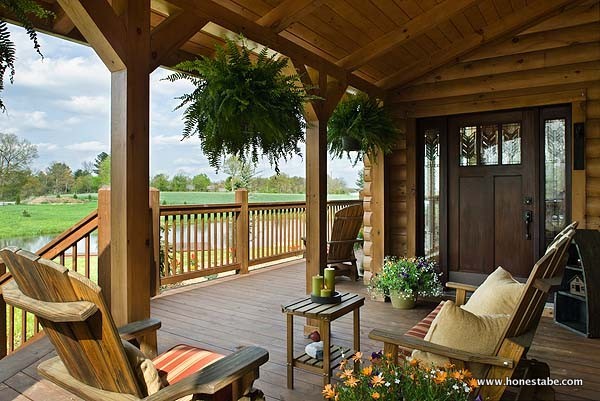
Take a video/drone tour of the Wilson home and property
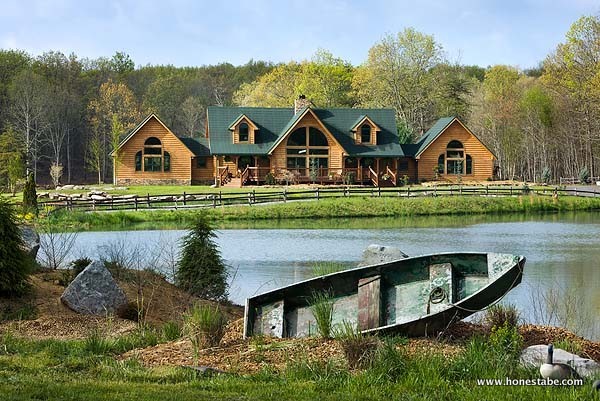
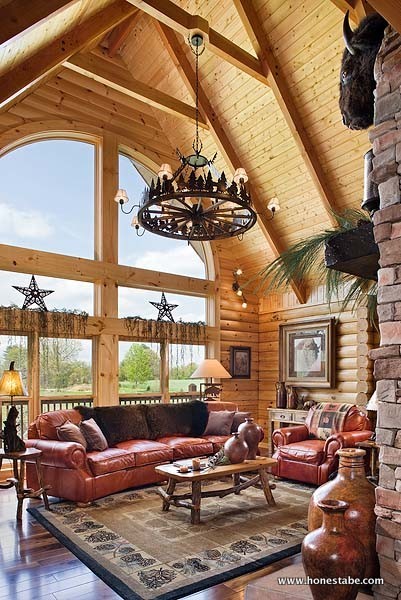
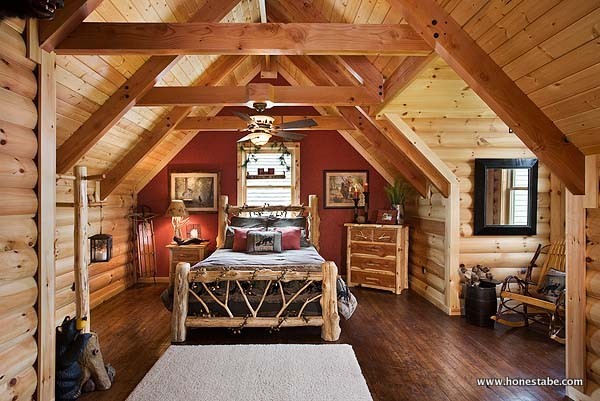
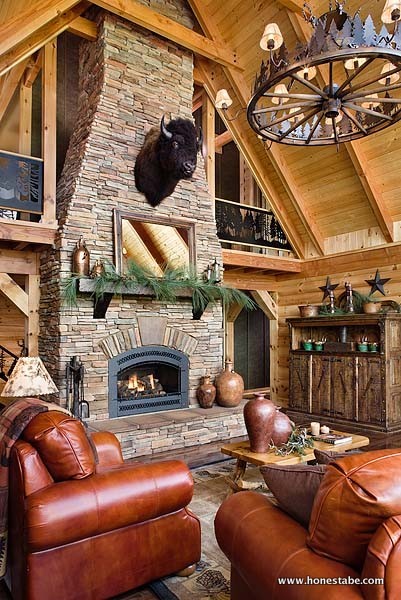
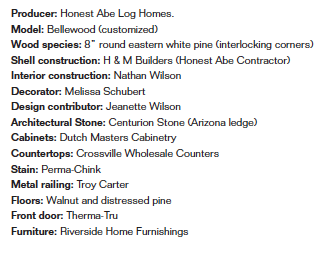
“I can’t imagine another home that would provide the atmosphere that a log home can. It’s the perfect match for our love of all things natural. It was a whole family effort, and we now all enjoy spending time together in this great place.”
One favorite piece is the dining room table, hand made by a 60-year-old craftsman who makes two each year. The legs are rooted stumps that are polished and stained. The top is made of walnut planks with uneven edges and a flawless satin finish.
“We had to expand the dining room by four feet to accommodate this table and had to enlarge the other side by four feet to keep the home balanced,” says Jeanette.
One breezeway has two walls covered with the Centurion stone; one wall was into a waterfall. The water seeps from the wall and trickles down the rocks into a copper trough with a cypress stump placed in the bottom. “You can hear the peaceful sound of water falling in the dining room and the family room,” Jeanette says.
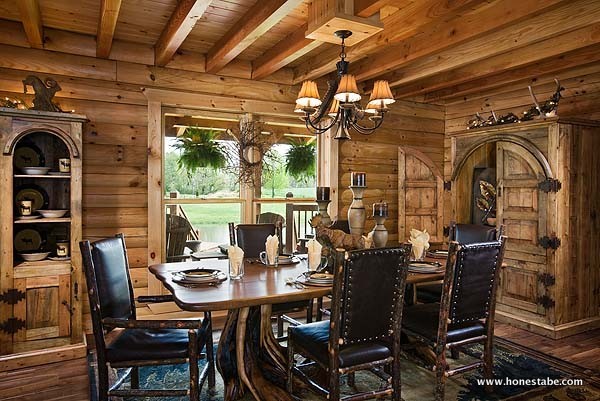
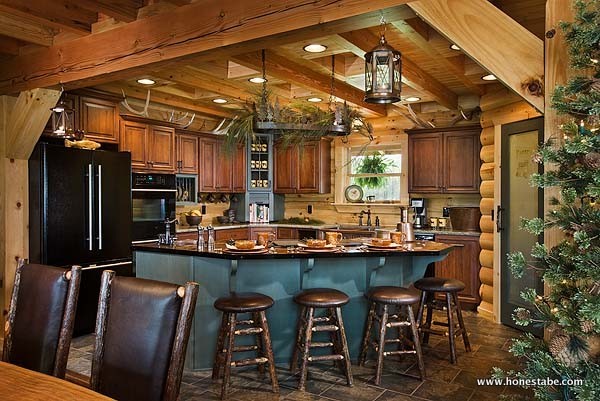
The U-shaped kitchen is built with raised panel hickory cabinets and oil rubbed bronze hardware. Tucked under the kitchen window is the hammered copper farmer’s sink and bronze faucet with embossed wildlife figures. The angled island has a copper countertop for a rustic look.
“Stains and discolorations just add to the character,” says Jeanette. The island also has a griddle with downdraft vents and a prep sink for full gourmet function.
In one corner of the kitchen is a walk-in pantry that houses canned goods and extra serving pieces. The door is made of frosted glass.
“It looks very impressive when lit from the inside and the kitchen lights are dimmed,” says Jeanette. “It almost serves as ambient lighting when guests are in the kitchen.”
The personalized touches and the natural setting is an ideal fi t for the Wilsons. “I can’t imagine another home that would provide the atmosphere that a log home can,” Grady says. “It’s the perfect match for our love of all things natural. It was a whole family effort, and we now all enjoy spending time together in this great place.”
Photography by Roger Wade
Styling by Debra Grahl
Cost-saving Measures
If you’re concerned about overrunning your budget before you begin construction, take another look at your roof and your footprint to simplify without losing the overall look. The more rooflines your home has, the more expensive it will be, and the roof is usually the most expensive part of the home. Simplifying the roof doesn’t include reducing the size of overhangs — wide roof overhangs are your log’s first line of defense against damaging sunlight and weather. Like roofs, a complex outline or “footprint” means higher construction costs. Count corners for a quick measure of complexity. More corners usually mean a more complicated foundation and roof as well. Complex outlines also generate more materials waste. Often you can actually gain square footage while saving money just by eliminating a corner or two. Don’t look at downsizing your design as “giving up” features that you want. View it as getting rid of things that may look nice but don’t really match your lifestyle and interests. If you really want a separate home theater room or walk-in shower, by all means include those in your design and look for other sources of savings. Creative construction strategies, such as adding features later (garages and decks), leaving areas unfinished (basements) and contributing your own sweat equity, can also help you save money. Coupled with thoughtful design, construction strategies can save reduce the cost of your home by 10 to 30% or more.
